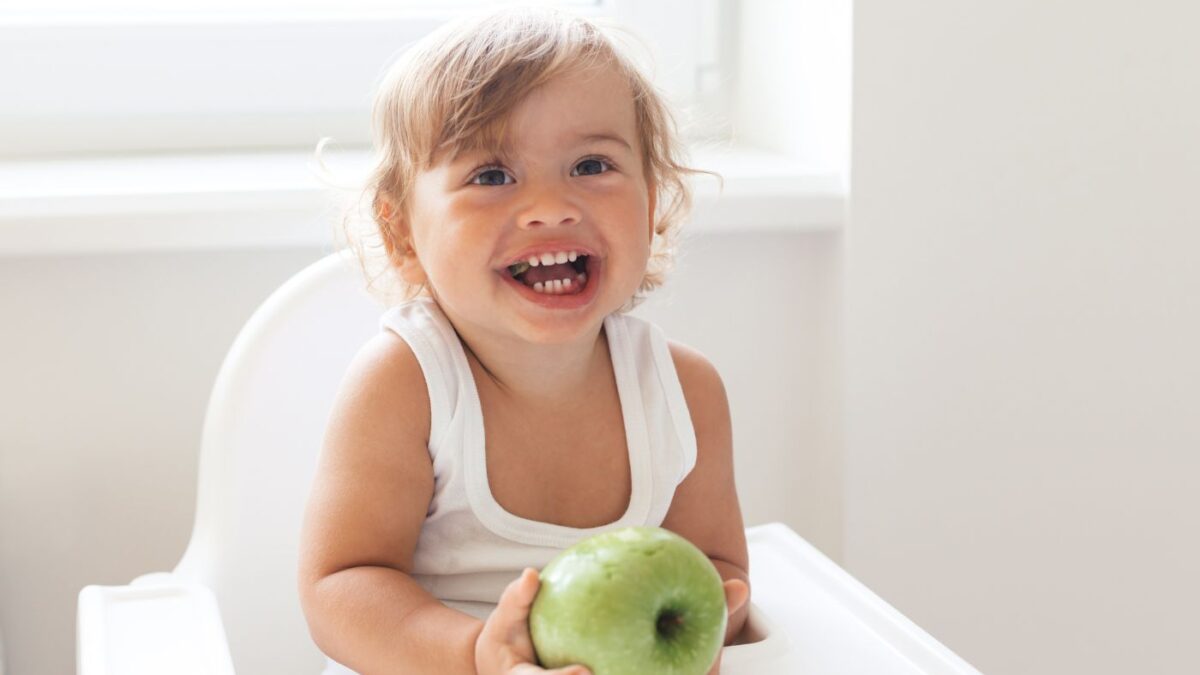Knowing when your baby is ready for solids is an important moment in the life of both a child and their parents, since this is when the fantastic journey begins. However, it is not always easy to see the signs of readiness. Obviously, babies can’t talk, so parents have to look for certain cues in their kids’ behavior that would mean “Yes, I am ready for solid food!”. In this guide, we’ll tell you more about the signs that it is time for something else other than toddler formula or breast milk. Enjoy you’re ready!
-
Your baby doesn’t have an extrusion reflex anymore.
This reflex protects babies from choking on food or aspirating it; also, the extrusion reflex helps newborns latch onto a nipple. The best way to see if the reflex is still present is to offer a spoon and observe how your baby reacts to it —- if the baby’s tongue thrusts forward, the reflex is still there. If the child accepts the spoon, the reflex is either gone or almost gone. The reflex always goes away with time, so you should expect it to be gone after the baby is around 4-6 months old. Without the reflex gone, your child won’t be able to eat solids, so it’s best to wait until the reflex is no longer present.
-
Your baby doesn’t need support to sit up.
Your baby has to be able to sit up without much assistance, not only because it is a sign that they are developing well, but also because they will be able to swallow their food easily. There are ways to encourage your baby to sit up, such as practicing assisted sitting or sitting on the floor, placing pillows around them to support them, as well as many others things. Babies always develop at different rates, so don’t try to rush things — just do your best to help your baby develop properly.
-
Your baby is interested in food.
To make your baby more interested in food, always include them in family mealtimes. Let them sit in your lap and watch how you eat and what you eat. When you’re feeding your baby, let them touch food and eat it themselves, without your support. If you use a spoon, let them hold it and try it out on their own. If you notice that your baby is not showing any interest in food, don’t panic — wait for a little bit, maybe, your child is just not ready.
-
Your baby demonstrates some eating behaviors.
One of the biggest signs of readiness is a display of eating behaviors — in other words, copying the behavior of adults is another big sign you should be looking for. Most commonly, this behavior includes chewing, gumming, and smacking lips, but it can be other things as well. Observe your baby, especially when you or other adults are eating around them, to see if their behavior changes.
Remember that there is no point in rushing
Every baby will develop at its own pace, so there is no need for you to rush things and try to make your child interested in certain foods when they are still not ready. It can be stressful to not know when is the right time, but it’s always best to take your time and not force anything.
In the meantime, you can focus on researching as much as you can about feeding your baby and finding all the important information for the next steps. From learning about the best natural baby food to finding the best ways to introduce solids, there are many things to take into account, so it’s best to focus on all these things instead of hurrying. Read more on Holle Formula.
Clare Weyers
Recent Posts
- Castor Oil For Better Hair Growth: Is It Myth Or Fact?
- Exploring the Differences Between Sermorelin, Ipamorelin, Ibutamoren, GHRP2, and GHRP6: Understanding Their Role in Human Growth Hormone Regulation
- Unraveling the Mystery: Understanding the Causes and Prognosis of Ventricular Tachycardia Without Apparent Heart Disease
- Understanding Grandparents’ Rights in Oklahoma: Navigating Visitation and Legal Protections
- 10 Reasons to Consider Hypnotherapy for Your Health

